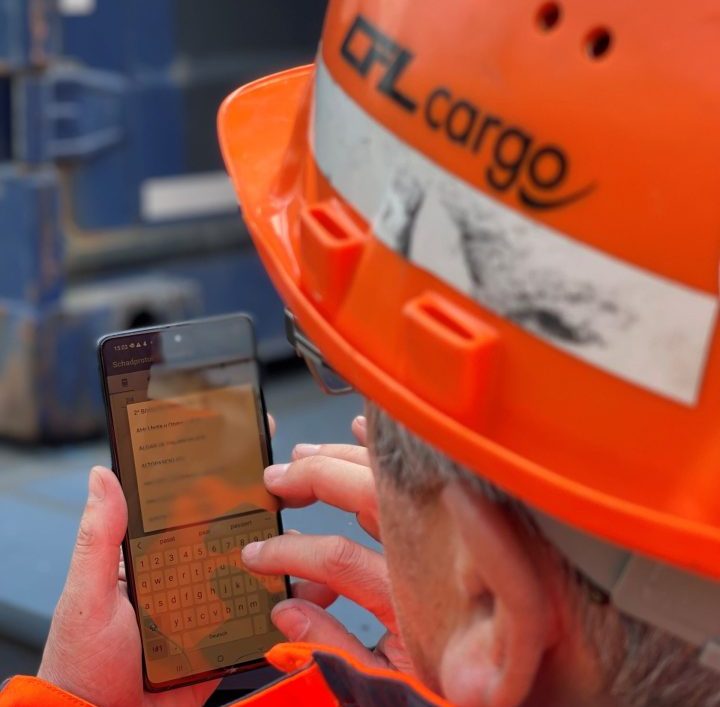Marcus Roth is a software developer based in Frankfurt, and Thomas Heydenreich is a rail freight consultant based in Hamburg. Together, they ‘digitally’ founded RailAppSolutions to improve the exchange of information concerning wagon damage reports. More recently, they launched TrainChecker, an app that allows quicker wagon inspections via a photograph, thus speeding up rail freight operations.
With TrainChecker, Heydenreich said, checking a wagon would take roughly 20 seconds while using the traditional way takes about two minutes. A train usually has 15 to 25 wagons, thus the app might lead to around 30 minutes saved in inspection time per train. “Moreover, inspectors often write down the data on paper when they are on the tracks, and then report them again digitally in their car. With the app they would be able to just go on to the next train and skip this step”, he said.
Train inspectors have to check the whole train and collect information and possible damanges in the so-called wagon list. “That took a lot of time in the past given the enormous amount of data that needs to be written down. Not only that, but they also have to carry out calculations and write them down”. For example, the maximum weight needs to be calculated to decide whether a train can circulate on specific routes. Moreover, the procedure is supposed to be carried out again every time the composition of the convoy changes.
A new frontier for damage reporting?
Heydenreich explained that five years ago, the General Contract of Use for Wagons (GCU) decided to become more digital. “When you detect damage, you must send a PDF document to the wagon keeper. More recently, they developed a data exchange platform which is called GCU Broker. However, small and medium enterprises have no chance to provide digital data to their broker”, he said. Therefore, TrainChecker comes from the necessity to help these companies push the information about wagons to their keepers.
“The solution is interesting for many private rail freight operators as you basically do not need any additional training and it covers damage reporting and the creation of a wagon list”, Heydenreich said. When it comes to damage reports, he underlined that there is no other commercial solution available on the market to create and send them digitally. For the wagon list, there are solutions but they are part of complex IT systems. You can only use it for a company’s own wagons. State-owned entities implemented in-house solutions to digitise their damage reports that are also not compatible with each other.
When it comes to maintenance, procedures can be planned in a more timely manner. If damage is reported earlier, the reparation can be better planned and cause fewer disruptions to the rest of the operations. “Often terminals receive information about damage when it’s already too late. If they can get it with a couple of days’ notice they can start setting up a workshop”, Heydenreich said.
A hard-to-crack sector
With TrainChecker, on the other hand, the data could be exchanged with third parties, making it an open platform. Rail freight is a very conservative sector, as Heydenreich pointed out. “If something works, it is hard to implement change even when it would be easier, cheaper and faster”. Forwarders seem to be more on board, whereas Railway Undertakings do not seem to be ready, which is the company’s biggest concern.

Also read:
